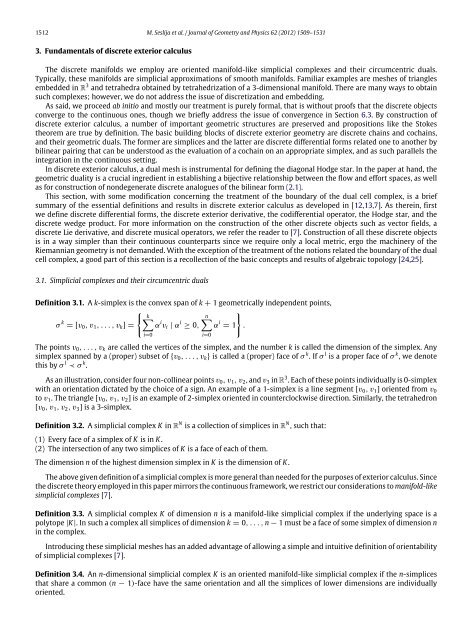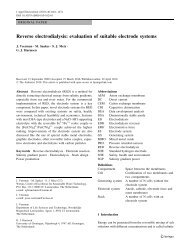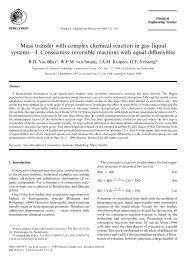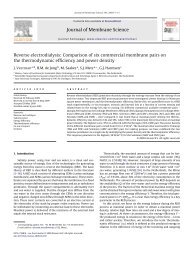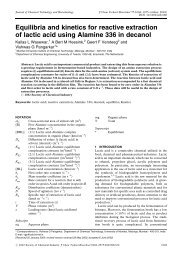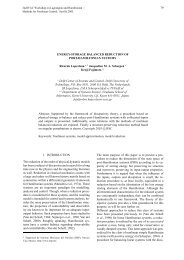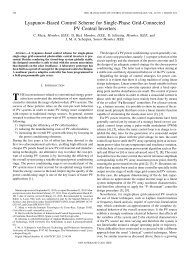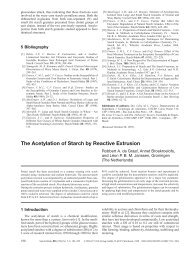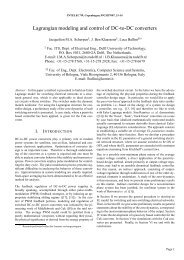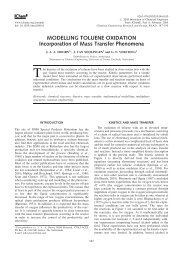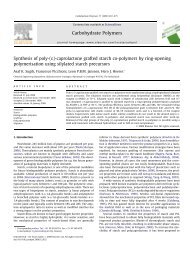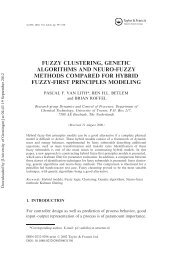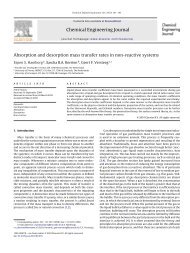Discrete exterior geometry approach to structure-preserving ... - ITM
Discrete exterior geometry approach to structure-preserving ... - ITM
Discrete exterior geometry approach to structure-preserving ... - ITM
Create successful ePaper yourself
Turn your PDF publications into a flip-book with our unique Google optimized e-Paper software.
1512 M. Seslija et al. / Journal of Geometry and Physics 62 (2012) 1509–15313. Fundamentals of discrete <strong>exterior</strong> calculusThe discrete manifolds we employ are oriented manifold-like simplicial complexes and their circumcentric duals.Typically, these manifolds are simplicial approximations of smooth manifolds. Familiar examples are meshes of trianglesembedded in R 3 and tetrahedra obtained by tetrahedrization of a 3-dimensional manifold. There are many ways <strong>to</strong> obtainsuch complexes; however, we do not address the issue of discretization and embedding.As said, we proceed ab initio and mostly our treatment is purely formal, that is without proofs that the discrete objectsconverge <strong>to</strong> the continuous ones, though we briefly address the issue of convergence in Section 6.3. By construction ofdiscrete <strong>exterior</strong> calculus, a number of important geometric <strong>structure</strong>s are preserved and propositions like the S<strong>to</strong>kestheorem are true by definition. The basic building blocks of discrete <strong>exterior</strong> <strong>geometry</strong> are discrete chains and cochains,and their geometric duals. The former are simplices and the latter are discrete differential forms related one <strong>to</strong> another bybilinear pairing that can be unders<strong>to</strong>od as the evaluation of a cochain on an appropriate simplex, and as such parallels theintegration in the continuous setting.In discrete <strong>exterior</strong> calculus, a dual mesh is instrumental for defining the diagonal Hodge star. In the paper at hand, thegeometric duality is a crucial ingredient in establishing a bijective relationship between the flow and effort spaces, as wellas for construction of nondegenerate discrete analogues of the bilinear form (2.1).This section, with some modification concerning the treatment of the boundary of the dual cell complex, is a briefsummary of the essential definitions and results in discrete <strong>exterior</strong> calculus as developed in [12,13,7]. As therein, firstwe define discrete differential forms, the discrete <strong>exterior</strong> derivative, the codifferential opera<strong>to</strong>r, the Hodge star, and thediscrete wedge product. For more information on the construction of the other discrete objects such as vec<strong>to</strong>r fields, adiscrete Lie derivative, and discrete musical opera<strong>to</strong>rs, we refer the reader <strong>to</strong> [7]. Construction of all these discrete objectsis in a way simpler than their continuous counterparts since we require only a local metric, ergo the machinery of theRiemannian <strong>geometry</strong> is not demanded. With the exception of the treatment of the notions related the boundary of the dualcell complex, a good part of this section is a recollection of the basic concepts and results of algebraic <strong>to</strong>pology [24,25].3.1. Simplicial complexes and their circumcentric dualsDefinition 3.1. A k-simplex is the convex span of k + 1 geometrically independent points, k nσ k = [v 0 , v 1 , . . . , v k ] = α i v i | α i ≥ 0, α i = 1 .i=0i=0The points v 0 , . . . , v k are called the vertices of the simplex, and the number k is called the dimension of the simplex. Anysimplex spanned by a (proper) subset of {v 0 , . . . , v k } is called a (proper) face of σ k . If σ l is a proper face of σ k , we denotethis by σ l ≺ σ k .As an illustration, consider four non-collinear points v 0 , v 1 , v 2 , and v 3 in R 3 . Each of these points individually is 0-simplexwith an orientation dictated by the choice of a sign. An example of a 1-simplex is a line segment [v 0 , v 1 ] oriented from v 0<strong>to</strong> v 1 . The triangle [v 0 , v 1 , v 2 ] is an example of 2-simplex oriented in counterclockwise direction. Similarly, the tetrahedron[v 0 , v 1 , v 2 , v 3 ] is a 3-simplex.Definition 3.2. A simplicial complex K in R N is a collection of simplices in R N , such that:(1) Every face of a simplex of K is in K .(2) The intersection of any two simplices of K is a face of each of them.The dimension n of the highest dimension simplex in K is the dimension of K .The above given definition of a simplicial complex is more general than needed for the purposes of <strong>exterior</strong> calculus. Sincethe discrete theory employed in this paper mirrors the continuous framework, we restrict our considerations <strong>to</strong> manifold-likesimplicial complexes [7].Definition 3.3. A simplicial complex K of dimension n is a manifold-like simplicial complex if the underlying space is apoly<strong>to</strong>pe |K|. In such a complex all simplices of dimension k = 0, . . . , n − 1 must be a face of some simplex of dimension nin the complex.Introducing these simplicial meshes has an added advantage of allowing a simple and intuitive definition of orientabilityof simplicial complexes [7].Definition 3.4. An n-dimensional simplicial complex K is an oriented manifold-like simplicial complex if the n-simplicesthat share a common (n − 1)-face have the same orientation and all the simplices of lower dimensions are individuallyoriented.


